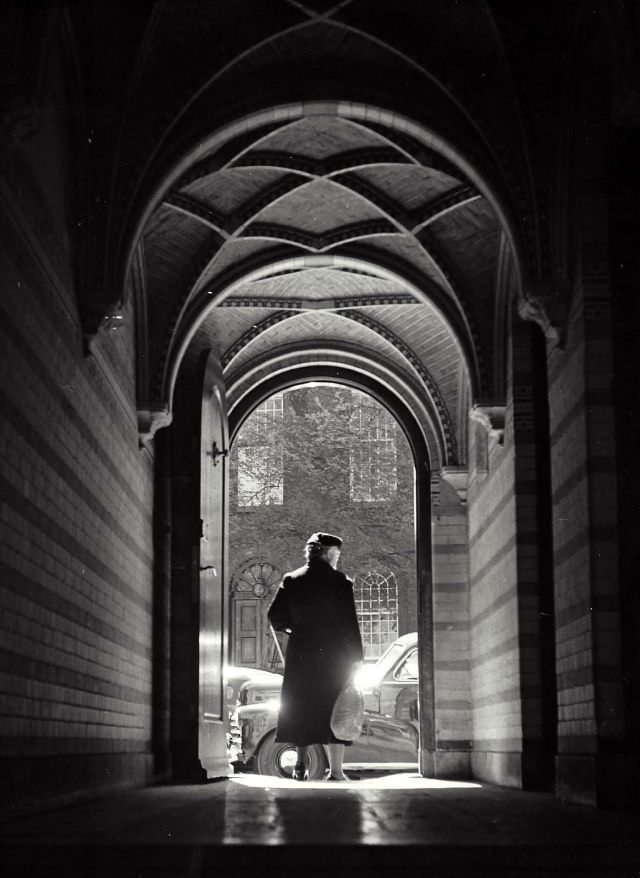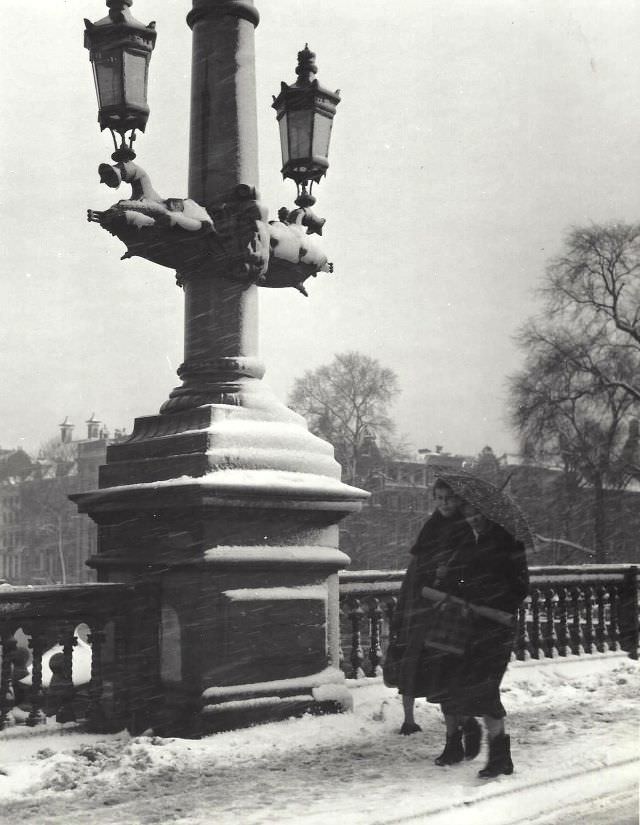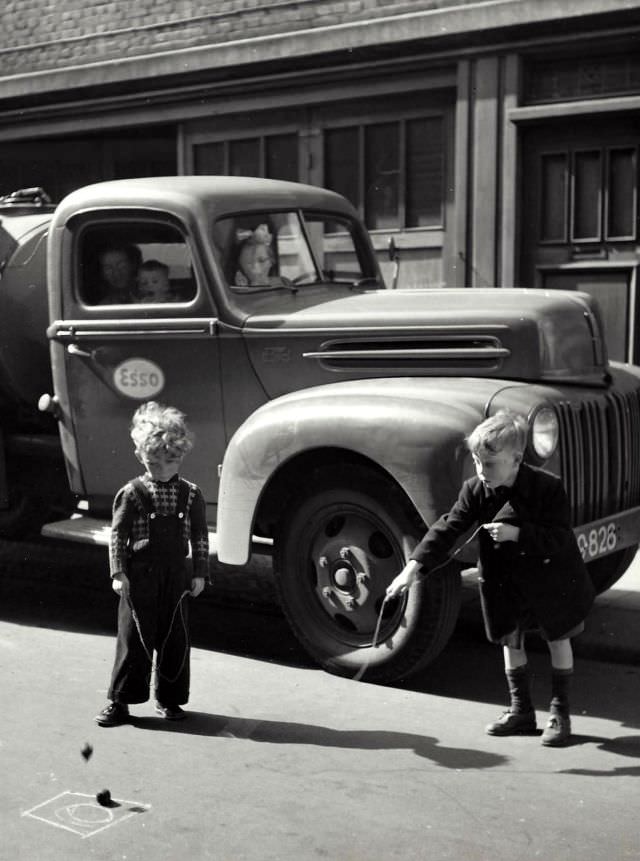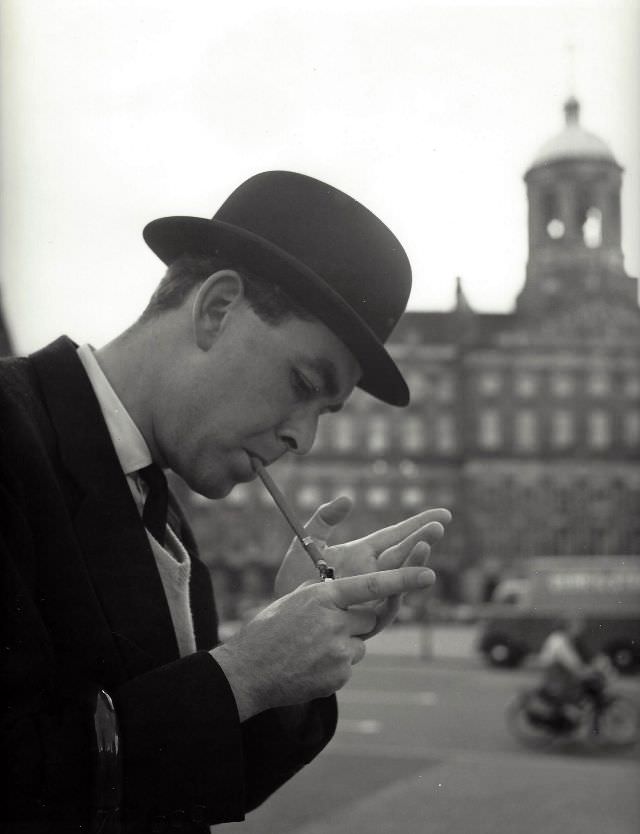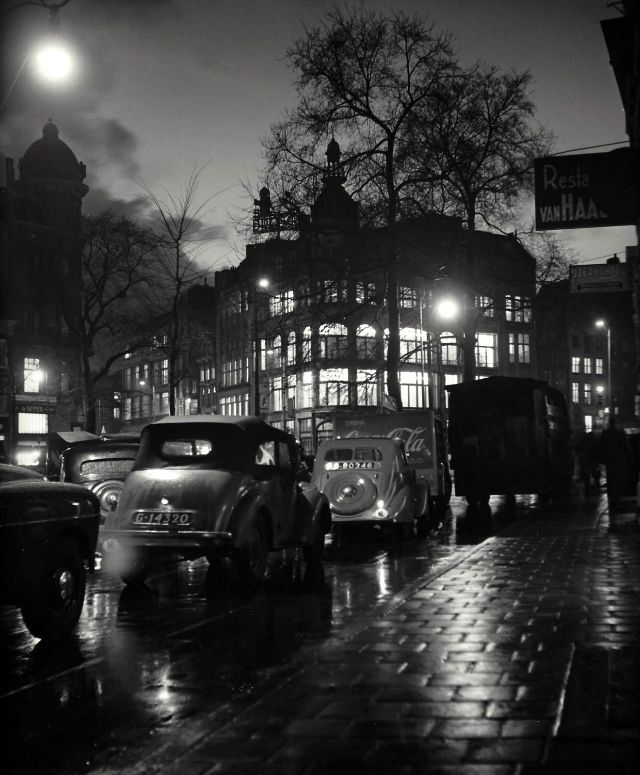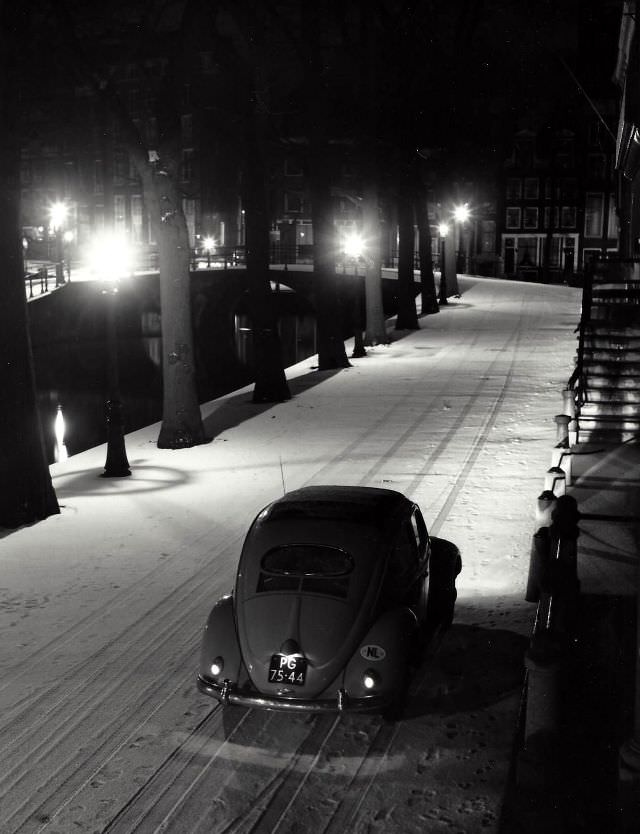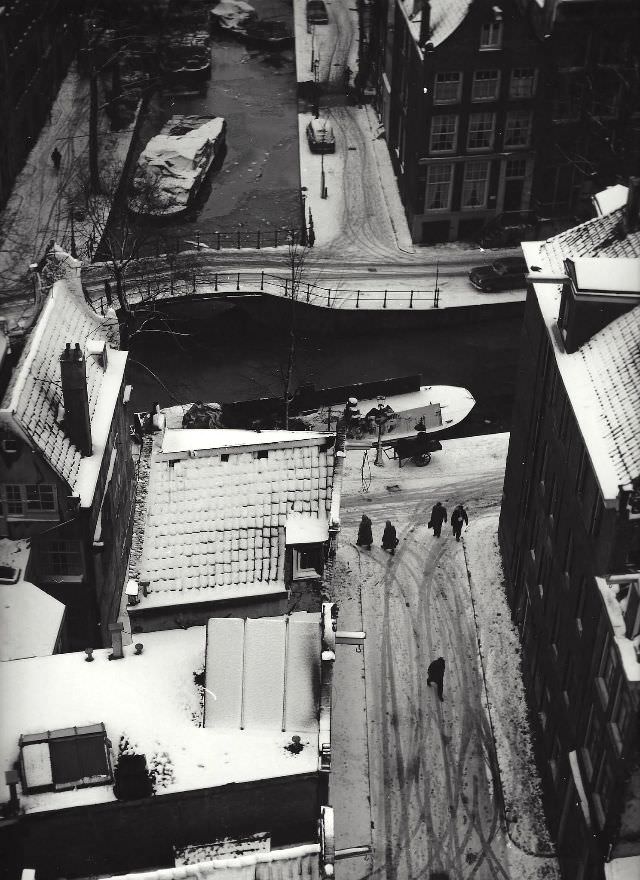The Post-WWII era in Amsterdam brought rapid development and progress. The city became the center of the diamond trade. In 1952, Amsterdam bid for the Olympic Games (summer games) but was unsuccessful. The games were held in Helsinki. These spectacular photos by Kees Scheer will take you back to 1950s Amsterdam.
Kees Scherer
Kees Scherer was born on April 16th, 1920, on the Lijnbaansgracht in Amsterdam’s characteristic neighborhood of the ‘Jordaan.’ He held on to his Agfa box camera as a young boy because it had so many sentimental values. He subsequently developed a big passion for photography.
After the Dutch liberation in 1945, Kees Scherer began working as a freelance photographer for newspapers and magazines. A pioneer of photojournalism, he was most famous for his photos of the 1953 Dutch floods (the ‘Watersnoodramp’) and the Hungarian revolution. In 1955, he and his colleague, Bram Wisman, who also worked at the Labour Press, developed the concept of World Press Photo, an annual photography award for the best photographs from all over the world. It remains today the essential photography competition in the world. Between 1955 and 1985, Kees Scherer was a Dutch photojournalist who traveled worldwide and became the eyes of Dutch general-interest magazines. He published many articles in the Dutch magazines Margriet and Avenue. In addition to making reports, Scherer also published several photographic books. He published more than twenty books in The Netherlands alone. He held a special place in his heart for his hometown Amsterdam, as well as in his files. He shows a particular fascination with light dynamics in this part of his photographic oeuvre. His work is dominated by backlighting and the play of light and shade, writes Mattie Boom, M.A., conservator at the Dutch Rijksmuseum.
Thus, he creates an objective statement about the essence of things without wanting to make a point, and therefore his work is more poetic than anecdotal. Scherer was mainly driven by exploring and exploiting the essence of the medium photography, and less by the content or subject.
Scherer was struck by a stroke on the same day his book ‘Zuiderzee, dood water, nieuw leven’ was released. After that, he no longer spoke, wrote or took photos. On January 19th, 1993, he died in Amstelveen’s hospice, ‘Het Zonnehuis.













